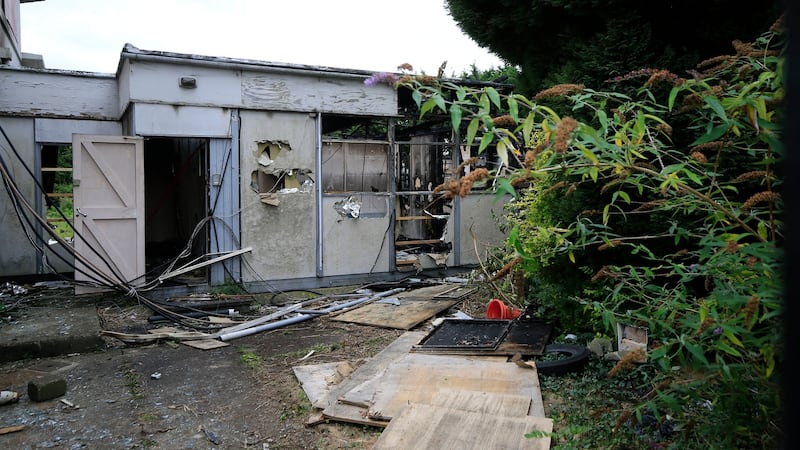Concern is growing for the future of one of Ireland’s first Art Deco houses, following a large fire which destroyed buildings on its grounds this week.
Balnagowan House, off Mobhi Road in Glasnevin, was built between 1929 and 1931. It was designed by London architect Harold Greenwood in the international modern style and is the one of the earliest examples of modern domestic architecture in the State.
The house has been vacant for more than a decade, and in recent months has been the scene of several fires, the largest on Wednesday night was attended by six fire engines. Sheds to the back of the house were destroyed but Dublin Fire Brigade prevented the blaze from reaching the main building.
The house is listed on Dublin city’s Record of Protected Structures and the city council last June served an “endangerment” notice on its owner, requiring works to be undertaken by October to deter trespass.
However Social Democrats TD Róisín Shortall said more needed to be done to protect the historic building.
“This is a gem of a building which unfortunately has been allowed to become derelict. I would be concerned that by October there won’t be a house left to protect.”
He said he was 'of course concerned' by the fire which he said was an act of vandalism, but he said the house had not been damaged and had been secured
The law in relation to protecting listed buildings was “weak” she said and needed to be updated. “I would call for local authorities to have the right to go onto properties and secure them, both for the protection of the architecture and for public safety.”

The house had been occupied by the Inland Fisheries Board from 1971 until 2005. After several years of vacancy it was sold in 2013 to nursing home operator Peter Purcell.
Squatters
Mr Purcell said the house had been occupied by squatters who had recently been removed following a court order. He said he was "of course concerned" by the fire which he said was an act of vandalism, but he said the house had not been damaged and had been secured.
Mr Purcell said he bought the house with the intention of building a nursing home in its grounds which backs on to the Bon Secours hospital,subject to planning permission. He had planned to use the the house itself as administrative offices. However, he said that plan was currently “on hold”.
An Taisce's heritage officer Ian Lumley said the house was "very adventurous" for its day. "It's a real rarity in the Dublin context. The style of building was very conservative at the time and the modern movement or Art Deco didn't have very much impact, apart from in the construction of cinemas."
The house was was highly unusual for its time with innovations such as internal intercom telephones, a fridge, dining tables fitted with electric hot-plates, concealed lighting, and fitted furniture.
The house was built for George Malcolm Linzell and was originally called Wendon, but its name was changed in 1938 by its new owner publican John Doyle, whose pub gave the name to Doyle's Corner in Phibsborough.













